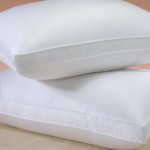1. Defrost the meat outside

The temperature range considered dangerous for food storage is between 5°C and 60°C. At this temperature, harmful bacteria can rapidly multiply. That’s why you should always defrost meat in the refrigerator or microwave.
2. Washing raw meat

Experts advise against washing raw chicken, beef, pork, or veal before cooking. This is because bacteria from the meat can easily spread to other foods, surfaces, and utensils.
3. Leaving food to cool before putting it in the fridge

Because harmful bacteria can rapidly multiply at temperatures between 5°C and 60°C, leaving cooked food outside the refrigerator for more than 1 or 2 hours is very dangerous.
4. Smelling food to check for spoilage

You can’t detect dangerous bacteria through observation or tasting food. However, even a small amount of bacteria can lead to food poisoning. To avoid this, discard any products that you suspect are spoiled.
5. Tasting raw egg mixture

You should not taste any form of raw egg mixture, as it poses a high risk of containing harmful salmonella bacteria. Additionally, you should also not taste raw dough, even if it doesn’t contain eggs, as the flour may be contaminated with E. coli bacteria.
6. Marinating meat or fish outside

This is another common habit that can lead to food poisoning. Always remember the temperature range at which bacteria flourish. When you marinate outside the refrigerator, you violate this principle.
7. Undercooked meat and fish

Food is considered safe only when it is properly cooked at a certain temperature. This is the best way to ensure bacteria are destroyed. You can use a kitchen thermometer to check the food while cooking.
8. Not washing hands before cooking

Bacteria can live on all surfaces, including our hands. Imagine how many things you touch on a daily basis, and when you start cooking without washing your hands, you can transfer bacteria to the food.
9. Buying water-injected chicken

Many poultry processing plants inject water into chicken meat to increase the weight of the product. This not only affects the taste of the chicken but also increases the risk of food poisoning.
10. Using honey at high temperatures

According to scientific research, the habit of processing honey at high temperatures can reduce its quality and can also produce toxic compounds that can cause cancer. Therefore, you should not add honey to hot tea or food.
According to Báo giao thông
8 Common Mistakes People Make with Cutting Boards
Are you using your cutting board correctly? Many Vietnamese households rely on cutting boards in their kitchen, but not everyone knows how to use them properly, especially when it comes to wooden cutting boards. Check out these 8 mistakes to avoid when using a cutting board to ensure both hygiene and safety for everyone in your family.
Is Refrigerated Leftovers Linked to an Increased Risk of Cancer?
Dr. Lam Van Man, Head of Research, Development and Technology Transfer Department of the Institute of Safety Food, has warned of the risk of food poisoning when reheating leftovers from the refrigerator. But what should we be aware of when it comes to the possibility of these leftovers causing cancer? Here, we explore what the experts have to say on the matter and offer some tips for safe eating.







































